Tips for reading
1. If you can not decipher letters, look for them in other places in the document. Looking at the same letter in a different context often enables doubts to be resolved.
2. If you can not decipher a word, try to find an identical or similar expression in another place in the document, perhaps it is possible to find a fragment in which the writer wrote the same word more clearly.
3. When it is difficult to read a word, a simple trick is sometimes useful – try to read the word from the end, letter by letter, covering the unread part of the word with your finger. Strange? But it really works!
4. This method is also useful when dealing with words containing letters which are difficult to decipher, such as m, n, u, and I. Besides reading from the end, you can try to count the number of vertical strokes of the pen and match them to these letters.
Examples:
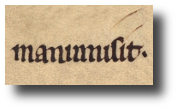
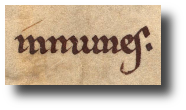
Â
5. Don't try to give a word a modern sound, this may be misleading while deciphering texts from the past. It should be remembered that for a long time there was no standardised manner for writing words, and writers gave them phonetic sounds, according to their own “ear”. That's why it is common, even in the same document, to meet varying forms of the same word.
Examples:
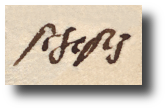

Â
6. For a complicated phonetic word, first read it precisely, letter by letter and don't be discouraged if the obtained word does not resemble any existing words in Polish. Try to read it again aloud, did it help?
Examples:
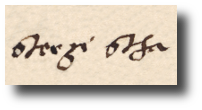
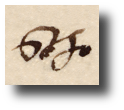

Â
7. It should be remembered that, in old texts, it is possible to come across words which are no longer used. Information about their meaning may be found in dictionaries of old Polish or other languages, suitable for the period from which the text comes.
8. Remember that, in the past, other forms of letters were often used, e.g. i instead of j, y instead of i, and u instead of v.
9. Pay attention to the fact that writers often used a few versions of the same letter in one text. This most frequently applies to the letter S, which appeared in short and long forms. The long S is easily confused with F – it's worth remembering about this!
An example:
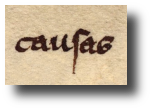
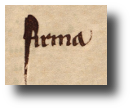
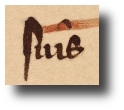
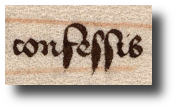
Â
10. Pay attention to the characteristic form of the letter F at the beginning of sentences in medieval texts – the writer wrote it with a multiplied form of FF instead of the singular F.
An example:

Â
11. If you have difficulty reading a word, the context of the sentence in which it appears may be useful. You can make use of this – read in this way, the word slowly allows you to learn the hand of the author and helps the deciphering of the further parts of the text. In a similar way, it is possible to use knowledge of constant formulas appearing in a given type of document, e.g. invocation. However, it is not worth trusting this method too much – the writer didn't always write what we would like to read!
Examples:

The same word in context:

Â

The same word in context:

Was context helpful?
Â
12. Remember that some letters today are written a little differently than in the past, don't be misled by, for example, the letter y, which was formerly often written with one or two dots.
Examples:



13. Similarly, the principles of punctuation and orthography we meet in historical texts differ from the ones we use today. The use of capital letters may be surprising.
Examples:

